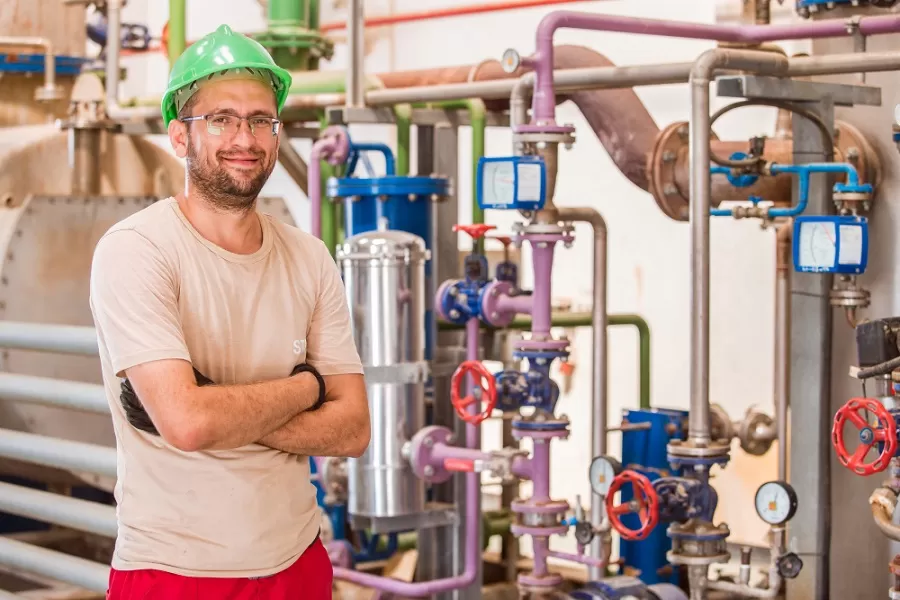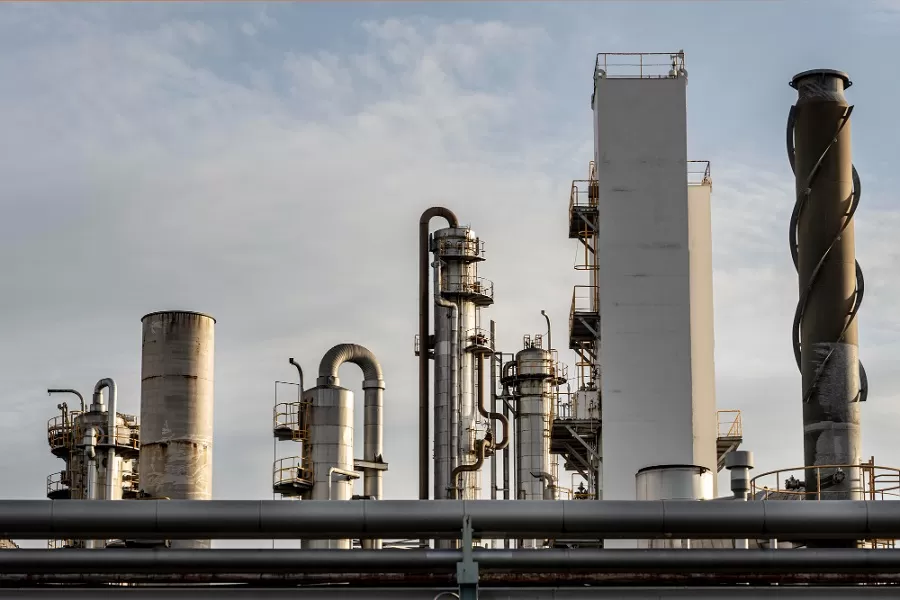When it comes to fire protection, fire sprinklers and fire suppression systems are the two most commonly used terms. While often used interchangeably, they are quite different from each other – both in use and purpose.
Though both fire sprinkler systems and fire suppression systems aim to detect smoke and extinguish fires, they use different mechanisms to put out fires.
To choose the right fire protection system for your building, it is important to understand the key difference between the two of them.
What is a Fire Sprinkler System?
A fire sprinkler system design is made up of a network of pipes that are connected to the temperature-sensitive sprinkler heads within a building. During a fire breakout, the sprinkler head detects the rise in temperature and triggers the release of water through these pipes to extinguish the fire.
Fire sprinkler systems are known for their immediate response time and high effectiveness in controlling fires during early stages. They work by preventing fires from spreading and minimizing property damage. These systems are commonly found in residential buildings, commercial properties, and industrial facilities.
|Click here to learn everything about fire sprinkler system design services|
Types of Sprinkler Systems
Depending on their applications, fire sprinkler systems are of the following types:
Wet Pipe Sprinklers
In this type of fire sprinkler system design, the pipes are constantly filled with water and are ready to discharge water when needed.
When the temperature rises and causes a sprinkler head to activate, it promptly releases water. Wet pipe sprinkler systems are commonly used in office buildings, high rises, hotels and residential structures where the temperature tends to stay stable.
Dry Fire Sprinkler System
In the dry pipe system, the sprinkler heads are kept closed with air or nitrogen. Even the pipes remain dry, without water. When the system is triggered, the compressed air or nitrogen is released. This allows water to enter the pipes and flow through the sprinkler heads. Dry pipe systems are often installed in areas that experience freezing temperatures, such, as warehouses because having water in the pipes could lead to freezing and potentially damage the fire protection system.
Deluge Sprinkler System
In this design, sprinkler heads are always open; however, no water is present in the pipes until activated. Once triggered these systems quickly fill up with water and release it through all of their sprinkler heads. Deluge sprinklers are used in locations with hazards, like laboratories where a prompt and concentrated application of water is necessary to swiftly contain a fire.
Pre-action Sprinkler Systems
They are designed to be more intricate as they include fire detection mechanisms. These systems require two triggers to activate; the primary system detects a fire and then a secondary activation opens the sprinkler heads.
Pre-action fire sprinkler systems are crucial in places where accidental water release can cause damage, such as museums, libraries, and data centers.
What is a Fire Suppression System?
Unlike fire sprinkler systems that primarily rely on water, a fire suppression system utilizes various extinguishing agents like foam, gases, dry chemicals, and carbon dioxide to effectively combat fires.
Fire suppression systems are commonly deployed in buildings that require alternatives to water for suppressing fire. This includes data centers, server rooms, elevator shafts, manufacturing facilities, and large warehouses. Moreover, facilities dealing with substances like oil and gas also need systems other than water-based ones to combat fire.
Types of Fire Suppression Systems
There are types of fire suppression systems available;
1. Gas-Based Fire Suppression Systems: In it, gases like carbon dioxide (CO2) is used for fire suppression. However, it should be noted that high levels of CO2 can pose health hazards; hence this system is best suited for spaces with limited human presence.
2. Wet Chemical Suppression: These systems are specifically designed for commercial kitchens. These systems dispense a wet chemical agent to control grease fires.
3. Chemical Suppression: This involves using a multipurpose dry powder like ABC to extinguish fires that are caused by wood, flammable liquids, and electrical sources.
4. Foam-based suppression systems: These types of fire suppression systems are effective in tackling fires caused by liquids like petroleum products. The foam creates a barrier on the liquid’s surface and smothers the flames.
5. Clean Agent Fire Sprinkler System: For areas like data centers where minimizing water damage is crucial, clean agent fire suppression systems are commonly deployed. These systems use substances such as Halon, FM 200 or Novec 1230 to suppress fires by reducing oxygen levels in the area.
Fire Suppression System vs Fire Sprinkler System – Making the Right Choice
When choosing between a fire sprinkler system and a fire suppression system, several factors should be considered. While both systems offer fire protection, they cater to different settings and fire hazards.
Fire Sprinkler Systems are more common and are found in a wide range of settings, including residential, commercial, and industrial buildings. They are considered to be a cost-effective method for fire protection. However, in specific settings or environments with unique fire hazards, they might not be the most suitable choice.
Fire Suppression Systems, on the other hand, are more specialized and tailored to specific fire protection needs. These systems use various agents beyond water and are often employed in settings that require non-water-based systems, such as buildings or setups dealing with flammable materials or delicate equipment like data centers.
Thus, the ultimate choice between a fire sprinkler system and a fire suppression system depends upon your specific requirements and the building’s internal and external environment. Factors such as the facility’s purpose, the type of materials stored or used, the level of human occupancy, and potential risks to sensitive equipment or property all play a crucial role in determining the ideal fire protection system.
That’s why, seeking help from a professional fire protection system design engineer is often recommended. With years of experience in the industry, they can evaluate the specific characteristics of your property, potential fire hazards, budget constraints, and the desired level of fire protection required and provide guidance on the most suitable fire protection system for your property.
Get Expert Help from Enginerio!
At Enginerio, we provide expert fire protection system design services for both Fire Sprinkler and Fire Suppression Systems, as per your building requirements. Our drafters and engineers can create on-point Revit fire protection models for you and can even help you choose the right fire protection system for your building.
Contact us today to learn more about our fire protection design and modeling services and create a foolproof fire safety strategy for your buildings and construction.





